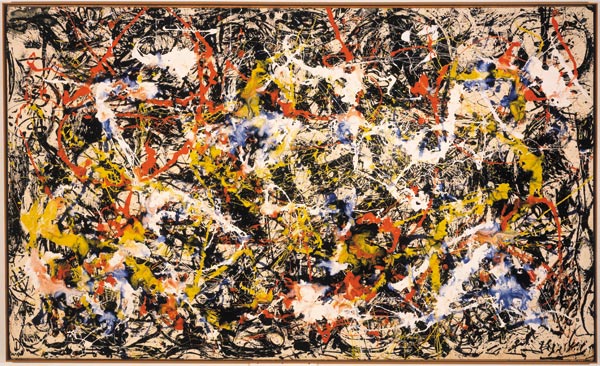Next story: Burn After Reading
Where the #$&!% is Jackson Pollock's Convergence?
by Dean Brownrout
One of the most well known and important paintings in the Albright-Knox Art Gallery collection is Jackson Pollock’s Convergence (1952). And gallery visitors with that awareness may have noticed recently that the painting is nowhere to be seen.
WHAT! Has the museum deaccessioned something else? Let the Wall Street Journal commentary and blogging begin.

Well, actually, the piece has been loaned out to the first major US exhibition in 20 years to address the Abstract Expressionist movement. Convergence, from our very own museum, is the centerpiece of this show.
Action/Abstraction: Pollock, de Kooning, and American Art, 1940-1976 is currently on view at the Jewish Museum in New York City, and travels next to the Saint Louis Art Museum. The Albright-Knox Art Gallery—and all of Western New York—will have the privilege of its presence from February 13 to May 31, 2009.
In reviewing the show, the New York Times’ Roberta Smith wrote “‘Convergence’ virtually explodes off the back wall…”
The exhibition contextualizes the artwork through the eyes of rival leading art critics of the period, Harold Rosenberg and Clement Greenberg. Greenberg’s support is widely acknowledged to have been the catalyst that turned Pollock into a household name.
The critics’ rivalry was in part based on their opposing ideas about Abstract Expressionism itself. Greenberg felt the movement was an extension of Modernism, while Rosenberg believed that it was a new and distinct form.
Convergence and de Kooning’s 1955 Gotham News (which is also owned by the Albright-Knox) are both featured on the cover of the accompanying 344-page catalogue. In addition, the book includes an essay by Douglas Dreishpoon, chief curator of the Albright-Knox and a curatorial consultant to the show.
Also included in the show from the Albright-Knox collection, are Arshile Gorky’s “The Liver is the Cock’s Comb,” 1944; and Jasper Johns’ “Numbers in Color,” 1958-59.
It is easy to take for granted the depth and importance of the Abstract Expressionist works at the heart of the Albright-Knox Art Gallery collection. Art-appreciating crowds in New York City are flocking to this show right now. When the show arrives here, and these works return to their home, it will serve to remind us of how lucky we are to have such a significant collection in our own backyard.
blog comments powered by Disqus|
Issue Navigation> Issue Index > v7n37: In The Aftermath (9/11/08) > Where the #$&!% is Jackson Pollock's Convergence? This Week's Issue • Artvoice Daily • Artvoice TV • Events Calendar • Classifieds |









 Current Issue
Current Issue